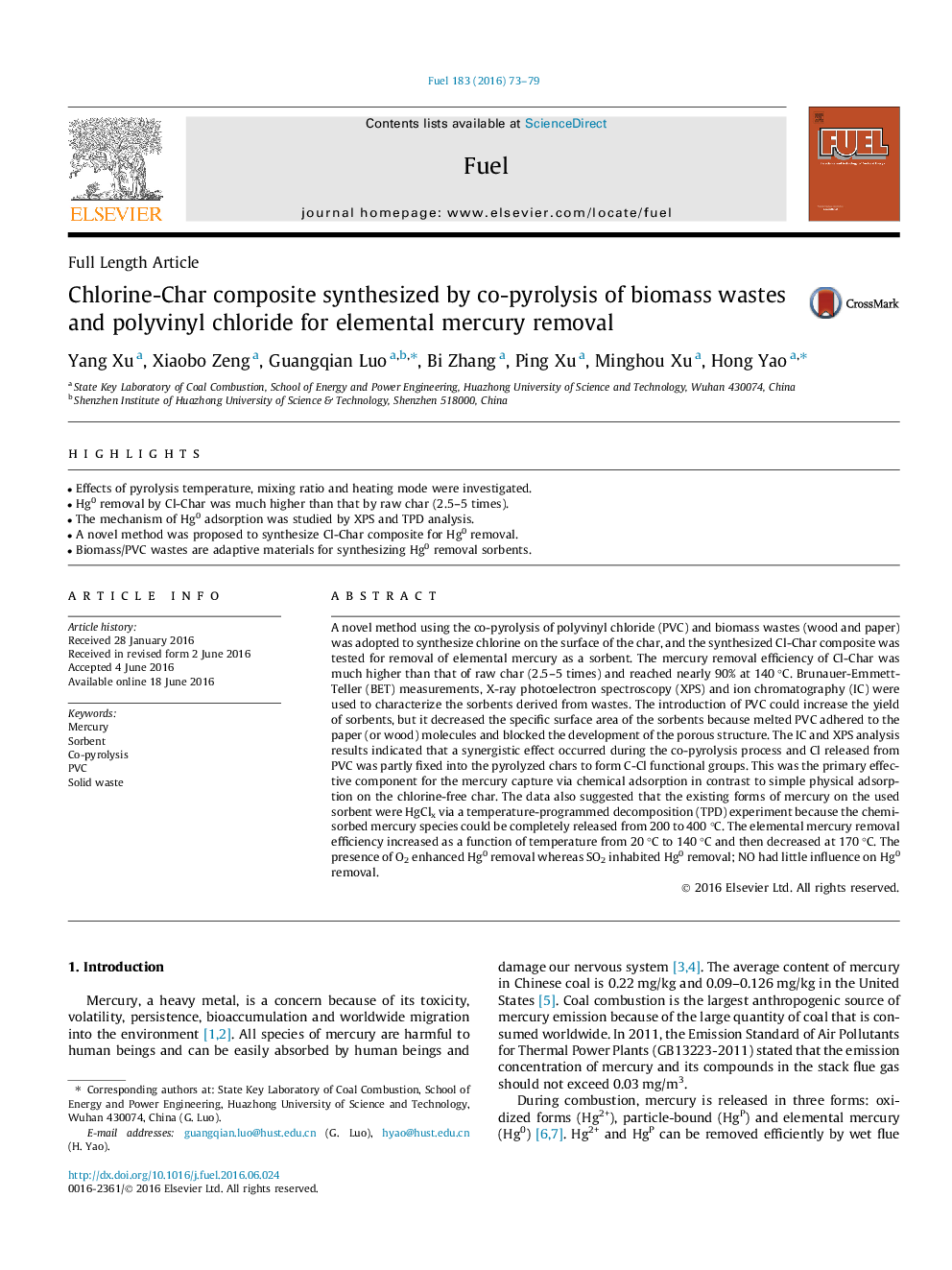| کد مقاله | کد نشریه | سال انتشار | مقاله انگلیسی | نسخه تمام متن |
|---|---|---|---|---|
| 6633197 | 461092 | 2016 | 7 صفحه PDF | دانلود رایگان |
عنوان انگلیسی مقاله ISI
Chlorine-Char composite synthesized by co-pyrolysis of biomass wastes and polyvinyl chloride for elemental mercury removal
ترجمه فارسی عنوان
کامپوزیت کلر و چرن به وسیله ی کمپرولیز زباله های زیست توده و پلی وینیل کلرید برای حذف جیوه عنصری
دانلود مقاله + سفارش ترجمه
دانلود مقاله ISI انگلیسی
رایگان برای ایرانیان
کلمات کلیدی
موضوعات مرتبط
مهندسی و علوم پایه
مهندسی شیمی
مهندسی شیمی (عمومی)
چکیده انگلیسی
A novel method using the co-pyrolysis of polyvinyl chloride (PVC) and biomass wastes (wood and paper) was adopted to synthesize chlorine on the surface of the char, and the synthesized Cl-Char composite was tested for removal of elemental mercury as a sorbent. The mercury removal efficiency of Cl-Char was much higher than that of raw char (2.5-5 times) and reached nearly 90% at 140 °C. Brunauer-Emmett-Teller (BET) measurements, X-ray photoelectron spectroscopy (XPS) and ion chromatography (IC) were used to characterize the sorbents derived from wastes. The introduction of PVC could increase the yield of sorbents, but it decreased the specific surface area of the sorbents because melted PVC adhered to the paper (or wood) molecules and blocked the development of the porous structure. The IC and XPS analysis results indicated that a synergistic effect occurred during the co-pyrolysis process and Cl released from PVC was partly fixed into the pyrolyzed chars to form C-Cl functional groups. This was the primary effective component for the mercury capture via chemical adsorption in contrast to simple physical adsorption on the chlorine-free char. The data also suggested that the existing forms of mercury on the used sorbent were HgClx via a temperature-programmed decomposition (TPD) experiment because the chemisorbed mercury species could be completely released from 200 to 400 °C. The elemental mercury removal efficiency increased as a function of temperature from 20 °C to 140 °C and then decreased at 170 °C. The presence of O2 enhanced Hg0 removal whereas SO2 inhabited Hg0 removal; NO had little influence on Hg0 removal.
ناشر
Database: Elsevier - ScienceDirect (ساینس دایرکت)
Journal: Fuel - Volume 183, 1 November 2016, Pages 73-79
Journal: Fuel - Volume 183, 1 November 2016, Pages 73-79
نویسندگان
Yang Xu, Xiaobo Zeng, Guangqian Luo, Bi Zhang, Ping Xu, Minghou Xu, Hong Yao,
